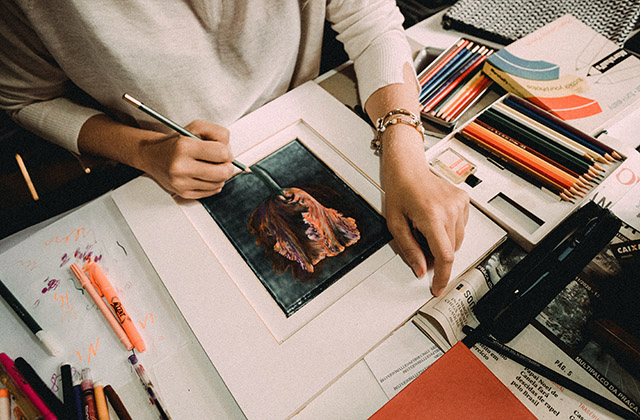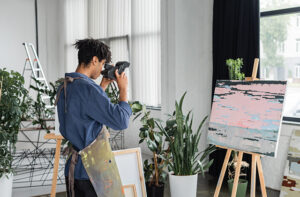Introduction
I’m a big believer that anyone can be an artist. I’ve seen countless people improve their art skills over time, and it’s always fascinating to see the transformation. Whether you’re just starting out or have been painting for years, there are steps you can take to improve your skills as an artist. In this article, we’ll explore some simple ways that you can start your journey towards becoming a better artist! In the next article we will write about the importance of tv storyboard.
Take a class
Taking a class can help you improve your art skills. But it’s not just about learning new techniques and skills:
- Learning from a teacher is also good for helping you think differently and creatively. Teachers are experienced artists, so they know what works and what doesn’t, as well as how to take things in a different direction than the norm. The more you learn from them, the more you’ll be able to do on your own.
- Finally, taking classes will help you develop relationships with other artists who may become mentors or peers over time!
Learn more about color theory
Learning about color theory is a great way to improve your artistic skills. The color wheel is an essential tool for artists, and understanding its principles will help you create more visually pleasing artworks. And if you want to explore the world of color beyond just using the basic color wheel? That’s where the full spectrum comes in!
The Basics of Color Theory
Color theory refers to a set of rules designed by scientists to help us understand how different colors work together as we create artworks. The most basic rule is that when two like colors are next to each other on the wheel, they appear darker than when two unlike colors are next together. For example, blue and green together look darker than red and orange because they both fall into one category (they’re cool). On the other hand, yellow-green is lighter than red-orange because they both fall into two separate categories: warm versus cool; high saturation versus low saturation (more on these later). The same goes for any combination or shade/tint/tone of these basic six hues: primary reds and blues are hot while secondary magentas are calming; tertiary yellows have more energy than their counterparts in greens or violets do but aren’t as bright as pure hues either way around—your eye sees them somewhere in between!
Study art
- Study art
If you have a passion for art, then why not learn everything you can about it? There are many ways to do this: you can find a class or workshop that focuses on your favorite style, or you may want to sign up for an online course. If you already know what kind of technique or medium interests you most and want to learn more about that, do some research and try to find classes that offer what you’re looking for. You’ll be surprised how many options there are out there!
Sketch every day
Sketching is a great way to practice your skills and improve your art. It will help you see things in a new way, draw things accurately, and draw things in perspective. Sketching is also very portable—you can carry it around with you anywhere! No matter where you are or what kind of paper or surface you have access to (including the back of an envelope), sketching can always be done.
Sketching is also an excellent way to learn how to draw quickly, which will help later when doing portraits or any type of figure drawing that involves quick strokes as well as more detailed areas of shading.
Visit museums
Museums are a great place to learn about art. You can see all kinds of paintings and sculptures, learn about the artists who made them and what they were trying to express. You can also get inspiration from other people who visit museums—they may be looking at something very different than you, but that doesn’t mean that it isn’t still valuable for you to take in. Being surrounded by art is an experience in itself; even if there aren’t any pieces that catch your eye immediately, just being somewhere with so much variety will help you become more familiar with different styles and techniques.
This knowledge will help when it comes time for you to create your own work!
Artists can achieve a lot of things by taking simple steps to imrpove their skills.
In order to improve your art skills, it’s important to get started with some simple tips.
- Learn how to draw from various angles. Artists can achieve a lot of things by taking simple steps to improve their skills.
- Learn how to paint in different styles and mediums like oil paints or acrylics. Artists can achieve a lot of things by taking simple steps to improve their skills.
- Learn how to sculpt in clay—it’s one of the most common materials used in sculpture due its malleability, durability and affordability (compared with other hard materials such as metal). You can use this technique on pieces that range from small figurines up through larger works like statues or monuments (e.g., Mount Rushmore). Artists can achieve a lot of things by taking simple steps to improve their skills
Conclusion
There are many ways to improve your art skills. The key is to practice consistently and to be patient with yourself. You should also have fun and be open to new ideas that will help you grow as an artist! Inquire here to improve your art skills.



